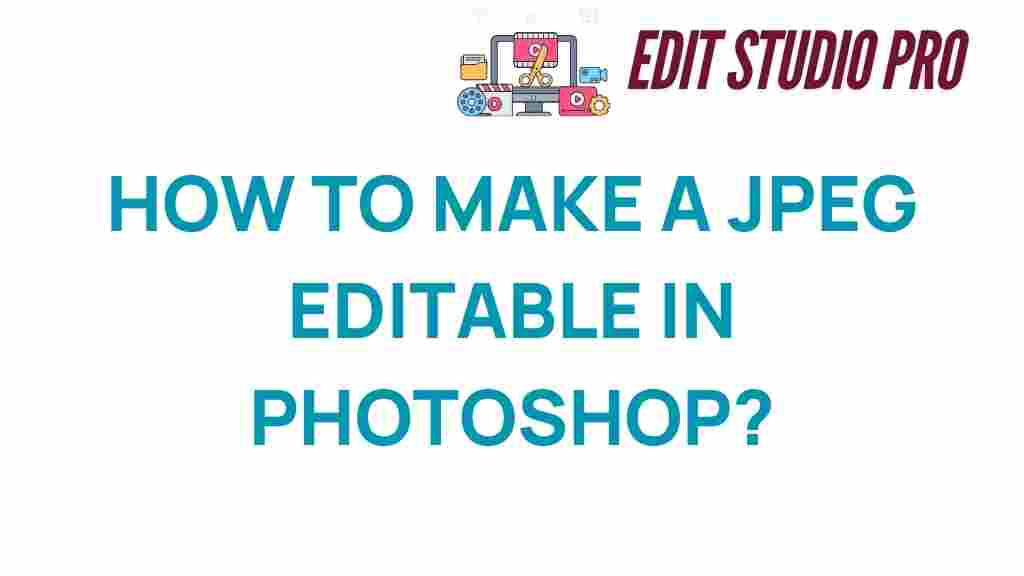Unlocking the Secrets: How to Make a JPEG Editable in Photoshop
In the realm of graphic design and digital art, the ability to manipulate images effectively is crucial for any creative workflow. However, one common challenge that many designers face is working with JPEG files, which are often not editable in the same way as other formats. This article will guide you through the process of JPEG editing in Photoshop, enabling you to unlock the full potential of your images.
Understanding JPEG Files
JPEG, or Joint Photographic Experts Group, is one of the most widely used formats for digital images due to its efficient compression capabilities. However, this compression often leads to a loss of data, making JPEG files less ideal for editing compared to formats like PSD or TIFF. In this article, we will explore various Photoshop tips and techniques to make your JPEG files editable.
The Importance of File Conversion
Before diving into the editing process, it’s important to understand the role of file conversion. When you convert a JPEG file to another format, such as a Photoshop (.PSD) file, you retain more editing capabilities. This is especially useful for tasks involving multiple layers, adjustments, and effects.
Steps to Make a JPEG Editable in Photoshop
Here’s a step-by-step guide to help you transform your JPEG files into editable assets using Photoshop:
- Step 1: Open Your JPEG File
Launch Adobe Photoshop and navigate to File > Open. Select the JPEG image you wish to edit.
- Step 2: Convert to a Photoshop Document
Once your JPEG is open, go to File > Save As. Choose the Photoshop (*.PSD) format from the dropdown menu. This will allow you to work with layers and retain the quality of the image.
- Step 3: Use the Magic Wand Tool
For precise selections, utilize the Magic Wand Tool (shortcut: W). Click on the area you want to edit, adjusting the tolerance as necessary to get the desired selection.
- Step 4: Create Layers for Editing
With your selection active, you can now create a new layer. Right-click on the selection and choose Layer via Copy. This allows you to edit the selected area without affecting the original image.
- Step 5: Apply Adjustments and Effects
Now that you have your layers set up, you can apply various adjustments. Use Image > Adjustments to access options like Brightness/Contrast, Levels, and Curves for enhancing your image.
- Step 6: Save Your Work
After completing your edits, save your work as a PSD file. If you need to export it back to JPEG, simply go to File > Export > Save for Web (Legacy) and choose JPEG. Adjust the quality settings to balance file size and image quality.
Troubleshooting Common Issues
While JPEG editing in Photoshop can be straightforward, you may encounter some common issues. Here are a few troubleshooting tips:
- Loss of Quality: If your JPEG appears pixelated after editing, ensure you’re working with the highest quality version of the image available.
- Selection Issues: If the Magic Wand Tool is not selecting the desired area, try adjusting the tolerance or using the Lasso Tool for more manual selections.
- Layer Visibility: If you can’t see your edits, check that the layer you are working on is visible and not hidden.
Enhancing Your Creative Workflow
To improve your overall creative workflow, consider implementing these tips:
- Use Shortcuts: Familiarize yourself with keyboard shortcuts in Photoshop to speed up your editing process.
- Organize Layers: Name and group your layers logically to keep your workspace tidy and manageable.
- Experiment with Filters: Photoshop offers a variety of filters that can add unique effects to your images. Don’t hesitate to explore these options.
Conclusion
Editing JPEG files in Photoshop may seem daunting at first, but with the right techniques and a clear understanding of the process, you can unlock a whole new level of creativity. Whether you’re enhancing photographs or creating digital art, mastering JPEG editing is an essential skill for any designer. To further enhance your skills, consider exploring additional resources on graphic design techniques and photo editing tips.
Remember, the key to successful image manipulation lies in practice and experimentation. So open up those JPEG files and start transforming your images today!
This article is in the category Photo Editing and created by EditStudioPro Team
